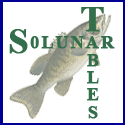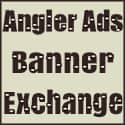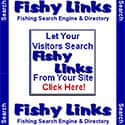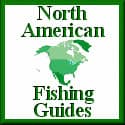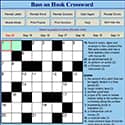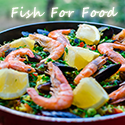Bass on Hook is Supported by our readers. As an Amazon Associate We earn commissions from qualifying purchases. For more informtion read our Amazon Affiliate Disclosure and Affiliate Disclosure Policies.
The Guides View Early Season Salmon on Vancouver Island's West Coast
By Jason Mohl
The dense ball of baitfish clouded the sonar screen, marking from ninety feet down to the oceans floor. The impulsive reaction to glance immediately at the rod tips was followed by the predictable downward thump of the port side rod.
As my frequent early season clients started to banter about whose arms needed more rest, I watched the second rod tip dive below the surface.
For the next fifteen minutes, I felt the contentment that most guides would, listening to the laughter of my happy clients and hearing the sweet screaming sound of line peeling from the glistening gold of my Islander mooching reels.
Salmon fishing during the early part of the season on Vancouver Island's West Coast could easily be labeled in a variety of terms, but the word predictable most often comes to mind.
Learn All You Can About Your Target Species
It is no big secret in the vast world of sport fishing that if you know your target species, where and when that species will be, and what their main source of food is, your efforts will be consistently rewarded with an increasingly predictable edge.
Pacific Salmon species are definitely no exception to this formula, especially during the early stages of the season when initial migration urges are juxtaposed with voracious feeding habits.
Early season Salmon opportunities on the West coast are primarily focused on Chinook, with Coho Salmon adding some diversity, often by the middle of June.
Usually by early to mid April, the weather conditions become more of a reliable factor, coinciding with the first runs of transient Chinook Salmon that are slowly en-route down the coast to their natal streams.
It is this same stage in the Salmon life cycle that makes them somewhat vulnerable and predictable, as they have one main activity that dictates where they will be and for how long.
Feeding on a variety of the oceans offerings and the abundance, or lack of these food sources, will encourage the early season Salmon to remain in one area, feeding for many tides, or to move with their instinctive urges.
Excellent Quality Brand Name Saltwater Fishing Gear!
Four affordable options to choose from with great reviews.
Click Products Below To Learn More (Affiliate Links)
Angling Methods Used To Attract Early Season Pacific Salmon
A variety of angling methods, gear types and techniques will produce fish at this time of the year, but from my experience, the following details will help ensure successful outings.
Locating baitfish is extremely important. This requires the help of a good sonar unit that shows the depth and density of the bait source, along with the potential of seeing the Salmon in and around the bait.
Main food sources include Herring, Needlefish, Squid and Pacific Sardines (Pilchard). Becoming more knowledgeable about the sizes and actions of these specific baits is a definite asset.
Knowing what type of bottom structure you are fishing around is also very important. I have been using the new Lowrance lcX-15ct with full color sonar, GPS mapping and duel frequency transducer to confidently help me know exactly where I am and what is under my boat. For this type of fishing, it is an indispensable item to have onboard.
Unquestionably, the most productive fishing method is trolling, and downriggers are a must, as the majority of early season Salmon are within 30 feet of the bottom. My Scotty downriggers are definitely a vital piece of equipment that helps me present my gear at the proper depths.
An item that most guides swear by, but don't often talk about is the Black Box, also made by Scotty. I strongly suggest looking into it or ask your local tackle retailer for details.
Medium power Trolling/Mooching rods between 9 and 10 ½ feet are most common. The Sage 4110 or 3106, G-Loomis 1265, Berkeley Roughneck or the Shimano Convergence series all fish well, along with reels that are loaded with 30lb test line.
My preferred reels would be the single action Islander MR-2 or Shimano 2000GT.
Not as interactive, but commonly used are level wind reels that enable anglers to retrieve line faster while utilizing a drag system that won't "bust your Knuckles".
Recommended level wind reels are the silky smooth Ambassadeur SX 7700 CL or the Penn 310 and 320GTi.
Trolling speed and depth are major factors, but for early season Salmon off of Vancouver Island's West Coast, work your gear just under or through any available baitfish. Otherwise, remember slow and deep.
Possibly the most important factor that will dictate the difference between a successful trip and just soaking bait, would be the "essential tackle box".
What Type Of Tackle Is Used For Catching Early Season Salmon?
There is a lot of gear on the market, with new items each year that will continuously catch more fishermen than fish. Granted, these pieces will periodically fool Salmon that are aggressively feeding, but so will a bare hook.
Being persistent with gear that has been proven a reliable producer definitely holds merit over the "tackle box guessing game".
I'm not advising anglers to stay narrow minded or not to experiment, but to consistently produce Salmon like the best Guides, you need to read the water conditions and confidently fish the proven gear that suits these conditions.
Did I mention that not all proven gear is general public knowledge?
Some items of terminal tackle that are a must have, and best fished to suit specific conditions.
My Preferred Choices For Dark Water Salmon Fishing Success
For early mornings, overcast days or dark water conditions, Purple Glow, Red Glow or Red Stryper Flashers can really light things up when necessary.
The most productive and effective piece of gear for Salmon at this time is an Anchovies rigged in a teaser head 6-8 feet behind your flasher. Glow Green, Chartreuse and Army Truck heads are all essential.
My lures of choice would be 3 ½ or 4 inch Army Truck or Glow Green 50/50 Coyote Spoons from Luhr Jensen.
Four inch Glow Green Gasoline or Army Truck Needlefish and Octopus hoochies, tied with tandem 3/0 - 4/0 Gamakatsu Hooks will usually get the Slabs salivating.
I tie the Spoons approximately 48 inches behind the flasher, and hoochie tails are preferred at 39-42 inches.
My Preferred Choices For Clear Water Salmon Fishing Success
When water conditions are clear, or the sun is bright overhead, your gear selection should change accordingly. Blades in Purple/Silver, Blue/Silver, Purple/Gold, and the Coho Special series from Oki are all a must have.
Teaser heads in Chartreuse, Clear and the new chrome series from Rhys-Davis should be down on one side of your boat at all times. Coyote Spoons in sizes 3 to 3 ½ inch should include Watermelon, Silver/Prism, Army-Truck and 50/50.
The 4 inch Gibbs Gators as well as the smaller "Krippled K" should not be overlooked.
Some More Valuable Early Season Salmon Fishing Tips
We should always remember the two pieces of gear that were the main stay for Commercial fishermen for many years past.
Tomic Plugs and large spoons continue to produce phenomenal results without the drag of flashers, offering a somewhat lighter tackle option.
Stock your tackle box with 4-6 inch Tomics #602, #700 and #232 as well as 50/50 Diamond Lance, P2B and 6 inch Gator spoons from Gibbs.
Some small tips that have proven helpful and effective for guides in the past, could be applied to your next outing with surprising results. I'm a believer in adding stick on eyes to my teaser heads and some spoons.
Try coating these same heads and spoons with clear nail polish hardener. This helps protect the factory color of your gear, while providing a wet look that fish don't mind at all.
When the bite is off, try shortening your leaders so the flasher whips your lure in a more erratic fashion.
The use of various scents should not be overlooked as a little extra "stink" has proven the difference for me more than once, though I don't use it on natural baits like Herring and Anchovies.
Remember to always rinse your rods, reels and gear with fresh water, promoting more fishing time and less time and money spent on repairs and maintenance.
The early inshore Coho fishery that increases by June should not be overlooked, as this is the start of some great light tackle action, particularly for the growing ranks of Saltwater fly fishermen.
This fantastic growth fishery has to be experienced to fully understand the addictive rush of an ocean bright Salmon slamming your fly and running down to your backing in mere seconds.
The light line give and take that ensues is definitely one of Salmon fishing's optimum challenges.
A 7 weight rod with intermediate to medium sink rate sinking tip lines will handle most early season fly fishing situations.
You can rely on small Shrimp and streamer patterns in oranges, pinks and reds to attract and produce.
Please remember that in this day and age of necessary conservation, the old adage of "Catch your limit, but limit your Catch" has never been more relevant.
Please practice careful catch and release.
The early season on Vancouver Islands West Coast is undoubtedly a prime time for Salmon opportunities, especially when you apply some of the above factors, giving you that "predictable edge".
Jay Mohl
Clayoquot Ventures
Tofino, B.C. Canada
Look for other articles written by Jason Mohl in Jay's Pro Staff Angler Profile






